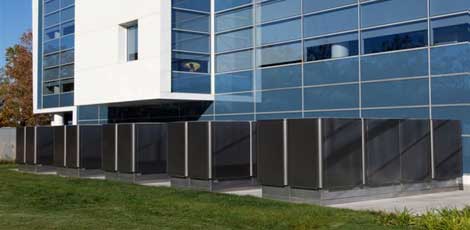Is the Bloom Energy Server the future of data center power? Or is it the latest promising energy technology to fall short of the economics and scale required to support major data centers?
Last week Bloom Energy officially unveiled its fuel cell, also known simply as the "Bloom Box." The company has deployed its units at a lineup of blue-chip customers including Bank of America, Coca-Cola, eBay, FedEx, Staples and Wal-Mart.
Early adopters are enthusiastic, including major players in the data center space. "Distributed power is a big deal," said Google co-founder Larry Page. "I’m a big supporter of this. I’d love to see us having an entire data center running on this some day."
Can a Bloom Installation Scale?
Google's data centers are believed to use large amounts of power - 20 megawatts, and perhaps much more. That kind of scale has been a major barrier for companies seeking alternatives to utility power. Each Bloom Energy Server provides 100 kilowatts of power in roughly the footprint of a parking space.
The Bloom Box contains an array of fuel cells that can converts air and nearly any fuel source – ranging from natural gas to a wide range of biogases – into electricity via a clean electrochemical process, rather than dirty combustion. Even running on a fossil fuel, the systems are approximately 67 percent cleaner than a typical coal-fired power plant, according to Bloom.
But what about the economics? At the current output of 100 kilowatts, it would require 100 Bloom units to support a 10 megawatt data center. At a price of $700,000 to $800,000 per unit, that's at least $70 million.
Bloom's customers say the boxes' cost works out to about 8 to 10 cents per kilowatt hour. But that's only when state and federal tax incentives are included, as noted by Lux Research.
Subsidies Make the Math Work
"Bloom’s California customers achieve the quoted electricity costs only because they pay for just half of the system’s capital expense, based on the generous 30% U.S. federal tax credit and the $2,500/kW California rebate," Lux notes in its analysis. "Without incentives, we calculate electricity would cost $0.13/kWh to $0.14/kWh, with about $0.09/kWh from system cost and about $0.05/kWh coming from fuel cost. Note that this is high compared to average retail U.S. electricity costs of roughly $0.11/kWh."
Amid all of the media coverage of the Bloom unstealthing event, some of the most detailed information came from this one-on-one interview Michael Kanellos of GreenTechMedia conducted with Bloom co-founder and CEO K.R. Sridhar. The interview runs about 8 minutes.





